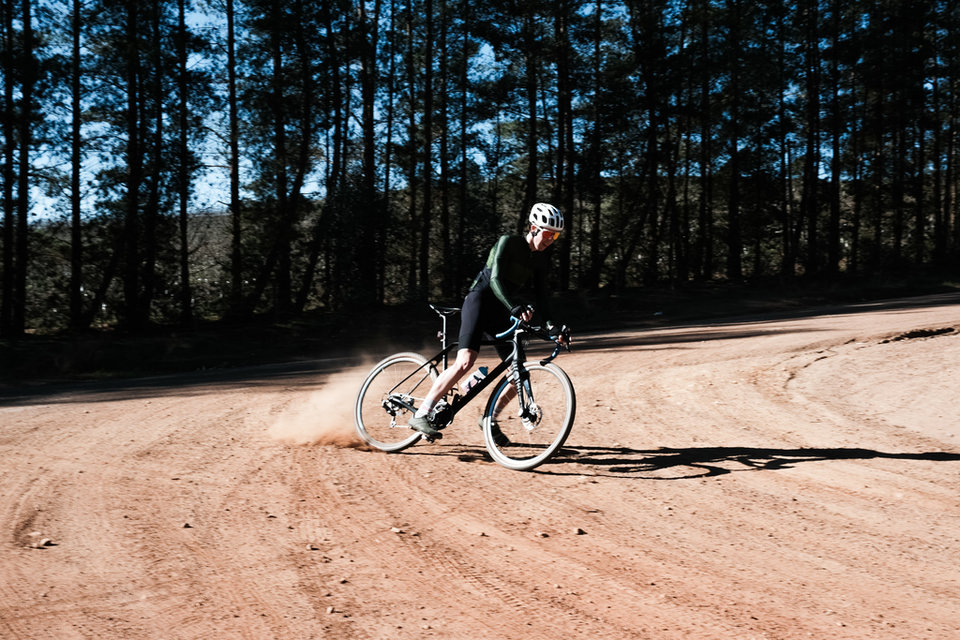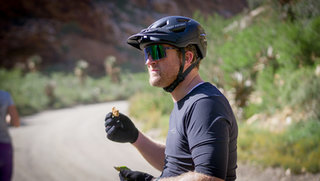
Why Your Second Bike
Should be a Gravel Bike
Everyone knows the N+1 formula for determining the ideal number of bikes to own. Currently Seamus Allardice is down to just 3 though. Constrained by space, and to be honest finances, that’s about the limit for most of us. But with a gravel bike in your arsenal, you’ll be able to do more, ride more and most importantly have more fun.
In surfing there’s a style of board known as a quiver killer. The type of craft which covers most wave conditions and is almost always fun to surf. In cycling that’s a gravel bike. You can race the Cycle Tour or 94.7 on it. You can take it on an adventure tour through South Africa’s vast network of gravel roads. You can even survive singletrack… Though that’s like paddling out at 6-8 foot Supertubes on a 5’8… you will get waves, if you’re Kelly or Gabriel Medina, but there are still times when us average Joes (and Josephines) need the right tool for the job.
Underbiking, like having a one board quiver can be fun. But there’s a time and a place for everything. And this is a mountain bike magazine. So obviously you have to have a mountain bike. And then, when the time comes to expand your quiver you need a gravel bike. Not a road bike, not a long-travel DH rig, not a hipster commuter and, heaven forbid, certainly not a time trial machine. You’re a mountain biker, not an antisocial maniac that enjoys 180km solo rides to keep them from tipping into full American Psycho mode.
Gravel bikes are above all social. Don’t get me wrong, they’re amazing for long head-clearing roams along desolate roads. But they’re better for group rides. You can draft, ride abreast or attack your mates just like you do on the mountain. The added bonus of gravel biking is that everything happens that bit quicker. Much like driving on corrugated roads you need speed to ensure comfort on a gravel bike, so you have to work to get up to a good tempo then the narrow tyres and lighter frame zip along, floating over the bumps (theoretically).

Gravel Grinding - Photo by Steve Thistle
In an ideal world you’d purchase a second set of wheels and install a cassette on the rear one, then shod with road rubber you’d be able to switch wheelsets on the morning of a road ride. Given that gravel bikes are just road bikes with a slacker (when compared to road racing bikes at least) head angle, a longer wheelbase and wider clearance, you should be able to hang with your roadie friends without a problem. Depending on the gearing you may struggle on downhill drags, but if you’re riding in a group that fast, you’re not looking for advice on bike choices… You know what works.
I’ve always had to settle for a second set of tyres, rather than a second wheelset. So, I go down to the local bike shop and have my slicks fitted when I know I’m going to be doing a lot of road riding. But generally, I tough it out on knobblies. It’s not that bad. And what doesn’t kill you makes you stronger right?
Most of the gravel bike riding I do is on the Overberg’s spiderweb of quiet back roads. Linking gravel sections with pieces of tar is great fun. Though I do often find myself wishing that the nearest decent stretch of gravel wasn’t 25 kilometres from Stellenbosch and my front door. That’s why I plan gravel trips, invite friends and organise a back-up driver. I’ve done supportless tours too, but it’s more fun with bags in the car rather than on your bike.
In short. Get a gravel bike. They’re great.

Underbiking at Rooibos to Muisbos - Photo by Oakpics
What to Look for in a Gravel Bike
Questions to ask yourself when purchasing a gravel bike.
Complex or Simple:
Bikes like the Specialized Diverge, Cannondale Topstone and Canyon Grail feature proprietary designs which are intended to improve comfort. In my experience, riding two of the three, they’re amazingly fast. But the added complexity of hover bars, head tube suspension and rear suspension systems just increases the things you need to worry about. A simpler bike – like the Giant Revolt, SCOTT Addict Gravel or Titan Switch – which relies on the tyres to smooth the ride would be my personal choice. That’s proven to be good enough for Paris Roubaix winners, so it should be good enough for you. That said if you like tech, go for the tech option.
Suspension forks:
Again, I like the simplicity of a fully rigid gravel bike. But if you need more comfort and are willing to sacrifice comfort for weight and increased complexity, go for it.

Tyre Choices:
Tyres make or break a gravel bike. I’ve done thousands of kilometres on Specialized Trigger tyres and can highly recommend them, as well as the Sawtooth. The Pathfinder tyres, appear to blend the side profile of the Trigger with a smooth central strip, which should make them ideal for riding a mix of asphalt and gravel. The wider your tyres the plusher your ride will be. You need at least 38mm wide rubber to enjoy any gravel grinding, so be wary of bikes which don’t offer tyre clearance for anything beyond 35mm.
Tubeless:
Obviously you need to go tubeless. That goes without saying. But for your safety and to increase the lifespan of your rims I’d suggest installing tyre insert like the cSixx FOAMO or Vittoria Air-Liner.
Flared bars:
Neither of the gravel bikes I’ve owned have had flared bars. But they’re on my upgrade list (after carbon wheels). The flares provide extra control on technical descents and improve the general comfort of your ride.

Seamus Allardice is Stellenbosch based freelance writer. When he’s not working at bike races, he’ll be looking for waves in the Boland or up the Weskus. He occasionally rides bikes himself too and has put in three training rides, thus far, for The Gallows gravel race in McGregor this June. What could go wrong?! Follow him on Instagram: @seamusallardice
BACK TO TOP